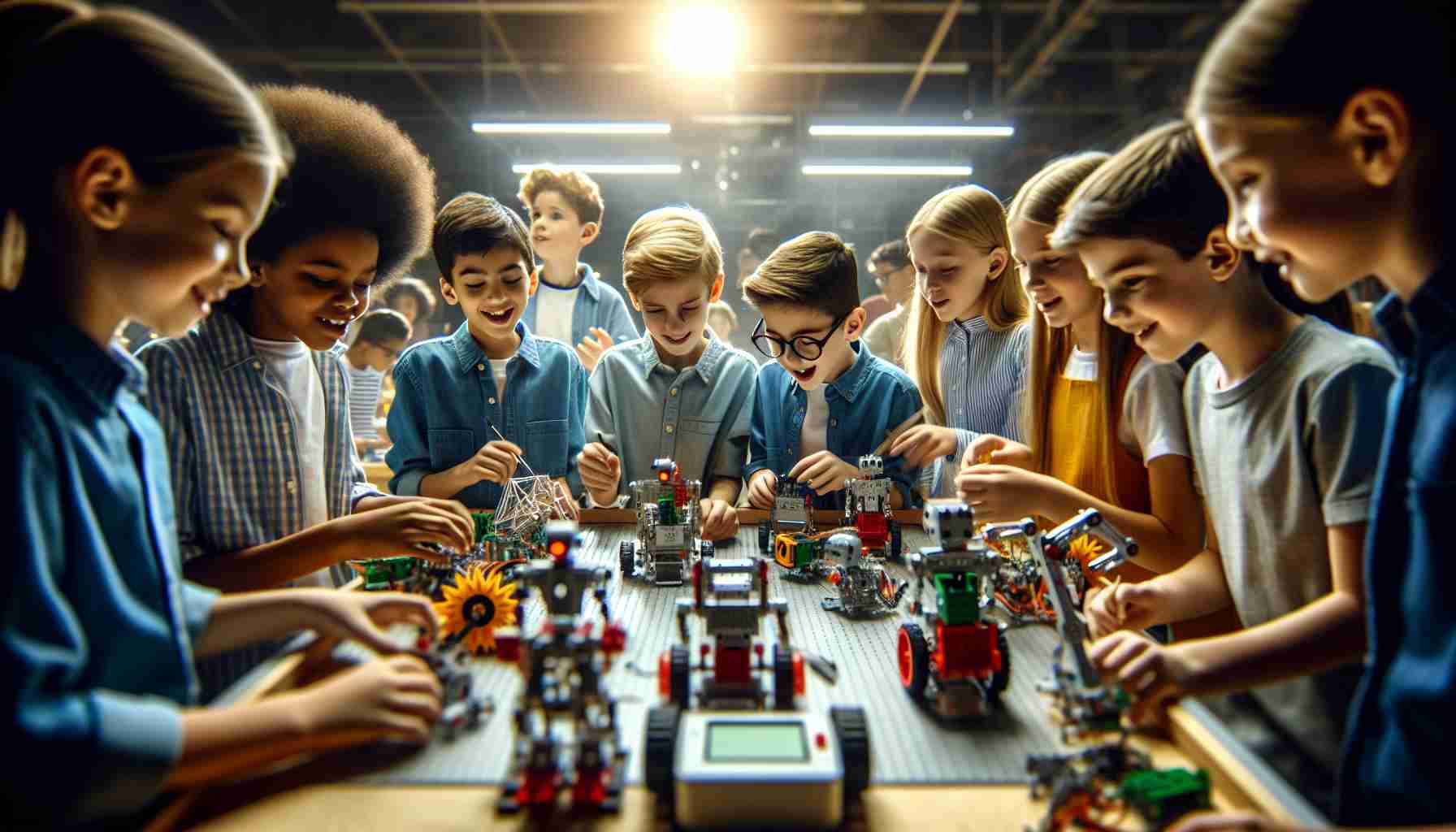A Remarkable Achievement in Robotics
The Moretown Elementary School robotics team achieved an impressive third place at a recent state competition, showcasing their skills among 39 competing teams, including those from public and private institutions as well as specialized STEM academies.
Formed this year, the Moretown Lego Robotics team stands as the first of its kind in The Valley. They made their mark by advancing to the state finals at Global Foundries, where they demonstrated their innovative abilities on January 18. The team, driven by supportive faculty members like fifth and sixth grade teacher Mish Boreanaz and school counselor Jason Stevenson, rose to the challenge with creativity and teamwork.
Participants were faced with the exciting task of designing Lego robots capable of executing specific functions. They also prepared an oral presentation addressing pressing environmental issues, specifically focusing on the dangers of microplastics in the world’s oceans. Their project featured a clever robotic whale inspired by nature, intended to filter out marine debris without disturbing wildlife.
Equipped with advanced Lego Robotics tools, the team practiced programming their robots to perform a series of live challenges. One particularly memorable task involved maneuvering a robot to raise the mast of a ship. Though the team did not secure a place in the top two required for further competition, they are already looking forward to next year’s opportunity.
Broadening Horizons Through Robotics: A Cultural Perspective
The achievements of the Moretown Elementary School robotics team extend beyond competition standings; they signal a crucial **shift in educational paradigms** that could resonate throughout society and culture. As robotics and STEM (science, technology, engineering, mathematics) education continue to flourish, they cultivate a generation of innovators who may tackle critical global challenges—such as environmental sustainability and technological advancement.
The integration of robotics into school curriculums is **poised to reshape the workforce**. By fostering skills in coding, problem-solving, and collaboration early on, students are better equipped for future careers in an increasingly automated economy. Statistics indicate that by 2030, nearly 375 million workers globally may need to switch occupational categories due to automation, emphasizing the importance of equipping students with future-ready skills.
Moreover, the project’s focus on **microplastics** highlights an urgent intersection of education and environmental awareness. As these young minds engage in real-world issues, they are likely to foster a culture attuned to sustainability, acting as advocates for cleaner oceans and responsible innovations. Such grassroots efforts can inspire broader movements that ripple through communities, ultimately influencing policy and cultural norms.
In looking ahead, the incorporation of robotics not only enhances student learning but also signifies a positive trend toward **civic engagement** among youth. As they become more aware of global issues through the lens of technology, the possibilities for future impact multiply. Their journey might be just beginning, but their potential to shape a sustainable and innovative future is remarkable.
How Moretown Elementary’s Robotics Team is Paving the Way for Future Innovators
### A Remarkable Achievement in Robotics
The Moretown Elementary School robotics team has recently made headlines for their impressive performance at a state-level competition, clinching third place amongst 39 competing teams, including public, private, and specialized STEM institutions. This achievement is significant, especially considering the team’s formation is relatively new, having been established just this year.
### Features of the Moretown Robotics Team
1. **Innovative Learning Environment**: The team stands out as the first Lego Robotics team in The Valley, demonstrating a pioneering spirit in educational robotics.
2. **Team Composition and Support**: The success of the team can be attributed to the unwavering support of dedicated faculty members, including fifth and sixth grade teacher Mish Boreanaz and school counselor Jason Stevenson. Their mentorship has been crucial in driving the students’ creativity and teamwork.
3. **Project Focus**: The team’s project centered around environmental sustainability, specifically tackling the issue of microplastics in the oceans. They designed a robotic whale, which serves as a prototype for filtering marine debris while minimizing disruption to wildlife.
### Skills Developed Through Robotics
Participating in robotics competitions not only fosters a range of technical skills but also cultivates essential soft skills among students. Here are some key areas of development:
– **Programming and Engineering**: Students engage in hands-on activities that promote technical understanding of programming and mechanical design.
– **Problem-Solving**: Competitors must strategize and troubleshoot in real-time during challenges, enhancing their problem-solving abilities.
– **Communication Skills**: Preparing an oral presentation allows students to articulate complex ideas clearly and effectively.
### Pros and Cons of Joining a Robotics Team
**Pros**:
– **Cross-Disciplinary Learning**: Students learn concepts from science, technology, engineering, and mathematics (STEM).
– **Teamwork and Collaboration**: Robotics clubs emphasize working in teams, building interpersonal skills essential for future careers.
– **Increased Engagement in STEM**: Participating in competitions often leads to greater interest in STEM subjects.
**Cons**:
– **Time Commitment**: Preparing for competitions can be time-consuming, potentially impacting other interests or academic responsibilities.
– **Pressure of Competition**: Some students may experience stress or pressure to perform, which could detract from the learning experience.
### Looking Ahead: Future Trends in Educational Robotics
The success of the Moretown Elementary robotics team signals a growing trend in education where robotics and coding are increasingly integrated into the curriculum. Here are some trends to watch:
– **Increased Accessibility**: Schools are more likely to adopt robotics programs, making these resources available to students of various backgrounds.
– **STEM Competitions Growth**: Competitions at local, state, and national levels are gaining popularity, fostering community support for educational initiatives.
– **Focus on Sustainability**: As environmental issues become more pressing, robotics projects that address sustainability are likely to gain traction among young innovators.
### Conclusion: Building a Foundation for the Future
The Moretown Lego Robotics team is not only showcasing remarkable achievements but also setting a foundation for future generations of innovators. Their dedication to creativity, problem-solving, and sustainability inspires students to explore the possibilities of technology within their communities.
For more information on robotics education and competitions, visit FIRST Robotics.
